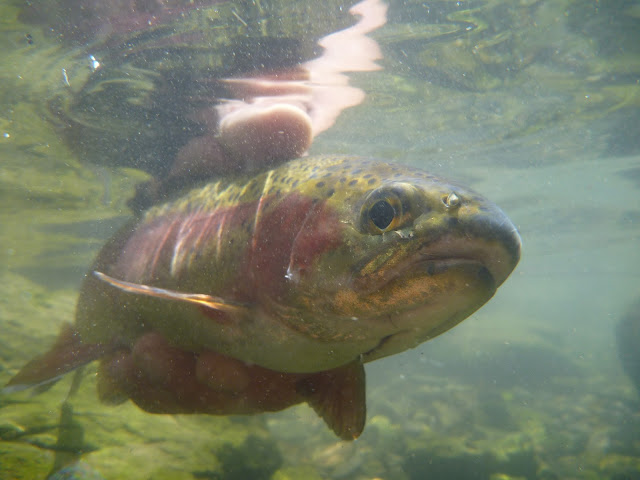With the heat of summer upon us, it is also time for that annual threat, the severe thunderstorm. Looking at weather forecasts, it seems as if thunderstorms are expected to occur every single day. They come quick and dump an inch or more of rain in a few short hours. For trout streams, this is replenishment. To a warm water angler, this muddies things up a bit. Fishing the shoreline for carp usually improves, and you might even be lucky enough to fish a flooded area for a carp. For those of us that depend on sight fishing in clear water, things can get a bit tricky, especially for those fish feeding in the middle of a body of water. These techniques will help you to catch carp in muddy water while helping you develop a sixth sense.
During my first few years of targeting carp on the fly, the preferred strategy in muddy water was to throw on a strike indicator. Although a reliable option in certain circumstances and excellent at detecting a take, indicators also detect any contact with the line or fly. A take and a bump register the same way to an angler and in my experiences it can result in a lot of foul hooked or snagged fish. My technique began to change as my experiences molded a sixth sense, or ability to sense a take without actually seeing it occur. Since, I have come to rely on my sixth sense whenever targeting fish in muddy water.
In order to accomplish catching carp in muddy water, one needs to pay careful attention to the feeding activity of the fish. In high, muddy water, carp let their guard down and go on the feed. You'll often find them in places that they normally will not be. Since carp are almost impossible to see feeding in muddy water, you'll have to spot them by finding the evidence of their feeding. This most often occurs by spotting a mud trail or a steady plume of bubbles. Once spotted, you need to determine the direction that the carp is facing. This requires careful observation of their feeding movements and mud plumes/bubbles. If the water is shallow enough, you may even get a glimpse of a tail which is a clear giveaway. Once you see which way they are facing, look for a pattern. Are they staying in one spot, slowly making their way up a linear path, or going any direction they want? The latter is the most difficult to catch, but the first two are catchable.
Once you spot and observe the fish, the next step is the presentation. Whether you are tossing a stationary bottom fly, a mid-column fly, or a fly fished on the bottom, you can read the take the same way. When fish are actively feeding on the bottom, they have their mouths in the muck and their senses are clouded by their disturbance. Once they are done, they will stop, pause, and continue, or they will move to a new spot to feed again. During these exchanges, when the fish stops or moves, is when they are susceptible to a fly. For this reason, I like to present my fly on the bottom, about 1-2 feet in front of the actively feeding fish. When the bubbles or cloud of mud stop rising from the bottom, you know the fish has paused or is looking to continue elsewhere. There is a few seconds of opportunity here when the fish will eat your fly.
If you are fishing a stationary bottom fly like a sucker spawn imitation your sixth sense is a prerequisite. Once the bubbles/mudding stops the fish can be on your fly. Usually there is a 1-5 second window where the carp can suck in your offering. If I think the carp is on the fly, I will tighten my leader/tippet and give a slow strip-strike. If this misses, I'll rarely spook the fish and since its slow, I am definitely not going to foul hook one. I will then wait until the fish begins mudding again and repeat the process. If the slow strip strike is a success, I will continue the slow strike and the carp will feel the tension, bolt, and hook themselves.
If you are fishing a mid-column or bottom fly that requires action, the presentation is the same. Have the fly on the bottom or in the column at the moment the carp stops feeding. Give a short strip and pause to get the carp's attention. While rooting in the bottom, carp disturb aquatic invertebrates and will hunt them down. Having your fly flee the carp when he emerges from mudding is highly representative of the movement of its actual forage. In this case, you will feel the take after the strip.
Muddy water carping is not easy. A lot of time on the water and fly fishing for carp is needed in order to be able to read the body language of these fish and develop a sixth sense. The aforementioned strategies here are higher level techniques that can be very effective once mastered. They require a lot of patience, accuracy, and an acute awareness of carp behavior to work well.
Good luck.


















































